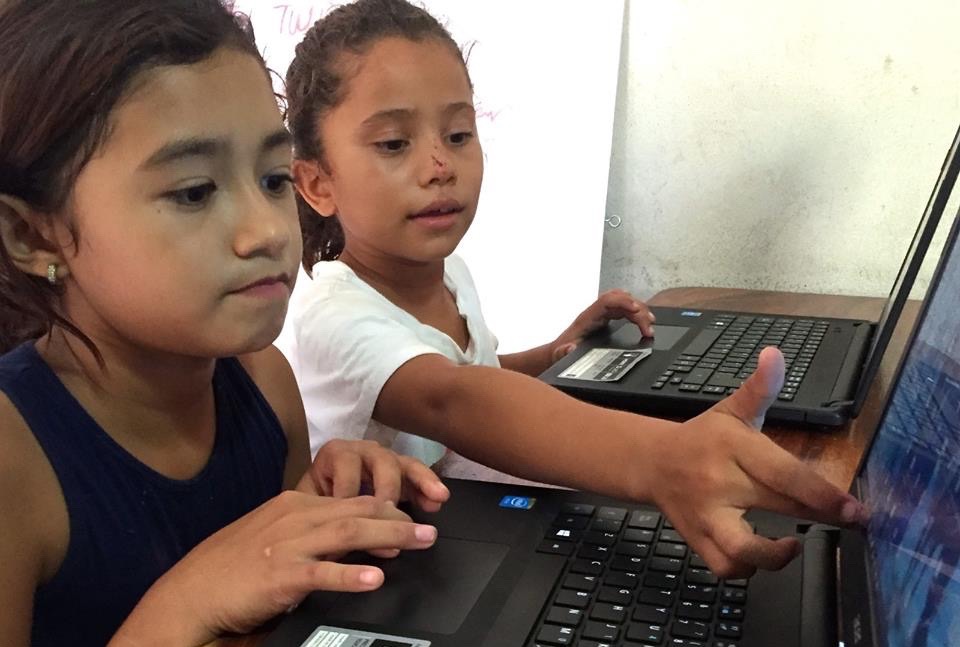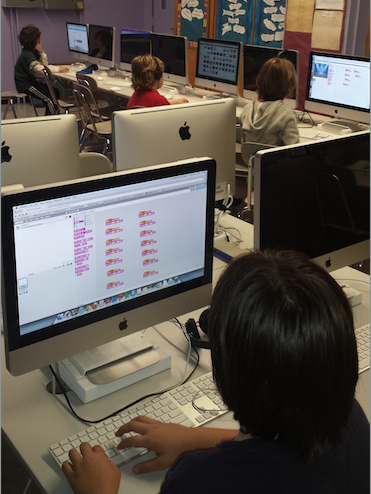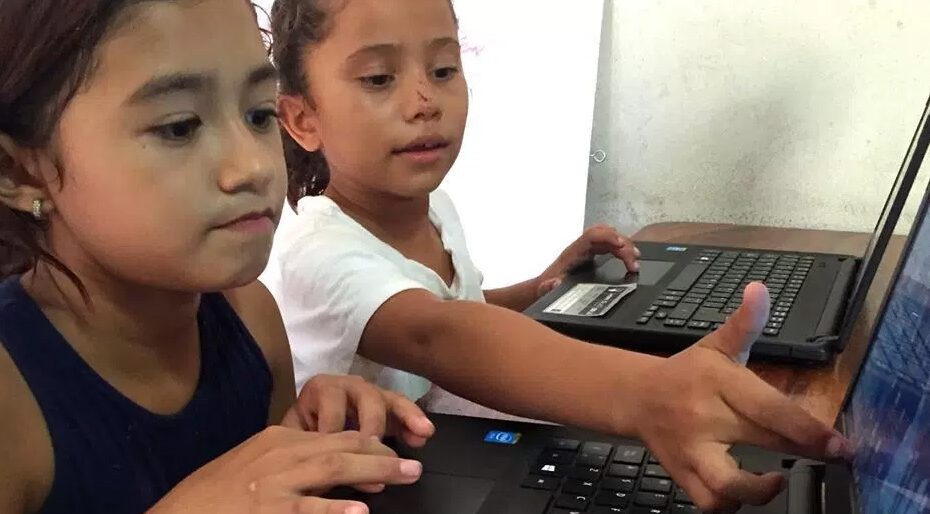
Students at NicaPhoto in Nicaragua employ design thinking in their Level Up Village Global Video Game Designers course. Game Design requires students to be nimble thinkers and problem solvers.
By Jake Parmley
Design Thinking, a rising trend in education, has taken root in classrooms across the globe. The Institute of Design at Stanford describes Design Thinking in education as an approach to learning that focuses on developing students’ creative confidence – where “using one’s imagination is central.”
The study of Game Design oozes key components of Design Thinking. By learning Game Design, students uncover both creativity and confidence. Creating new rules/objectives, writing new stories or finding new ways to utilize technology fosters this confidence and challenges the imagination.
Two distinguishing characteristics of Design Thinking are finding simplicity in complexity and improving quality of experience.
Simplicity in Complexity
Mastering Game Design challenges creators to invent complex situations for players that can be solved using a simple set of rules. Consider the mind bending puzzle chambers in Portal. These chambers are solved by placing an entry portal and an exit portal. The game begins simply enough, teaching players this basic rule. Quickly, the puzzles become more intricate. Even as the game’s difficulty ramps up, the elegantly simple idea of entering one portal and coming out another remains firmly intact.
Through practice, students will view Game Design similarly by leveraging Design Thinking. They will imagine complex challenges for players that have simple solutions.

Portal employs mind-bending puzzles that emphasize the importance of finding simplicity in complexity – an important tenet of design thinking.
Improving Quality of Experience
Game Design, like many projects, specifically within software development, involves constant iteration. These iterative tweaks come in the form of balancing adjustments, aesthetic changes and optimization. While the iteration comes in many forms, its goal is always improving quality of experience.
Ideate
Improving the quality of an experience involves ideation. The ideate portion of the Design Thinking process, according to The Institute of Design at Stanford is when “students are challenged to brainstorm a myriad of ideas and to suspend judgment. No idea is too far-fetched and no one’s ideas are rejected.” Students will work alongside peers (their audience) when creating games using software like Scratch. In doing so, feedback will be shared that encourages ideation.
During the ideate portion of Level Up Village’s Global Video Game Designers course, students often referenced their favorite games and expressed a desire to expand those games in new ways. These ideas for expansion weren’t rejected, but were instead analyzed by a group. Conversations like how to improve Minecraft dominated class discussions and helped students understand the importance of improving quality through ideation.

Students at PS163 in New York City design video games using Scratch in their Level Up Village after school course.
Scope Refinement
One of the biggest challenges in Game Design is scope refinement. This is one of the biggest challenges because Game Design embodies Design Thinking and ideation. Students and designers are encouraged to imagine the wildest scenarios, worlds and mechanics they can. Indeed, no idea is too outlandish. Then, they think critically about how these ideas can form a cohesive game vision. From these thoughts, students begin refining the project scope – revealing what makes the game special. The refinement process means improving the quality of experience of the game by removing unnecessary features.
If you’re looking to embrace Design Thinking in the classroom, look no further than Game Design. Game Design gives students the creative confidence to imagine, ideate and improve. As a result, Game Design continues to evolve alongside education, displaying its flexibility and relevance as a quintessential 21st century educational tool.
See these other articles by Jake Parmley:
Kids in Austin & Pakistan Collaborate on Video Game Design




